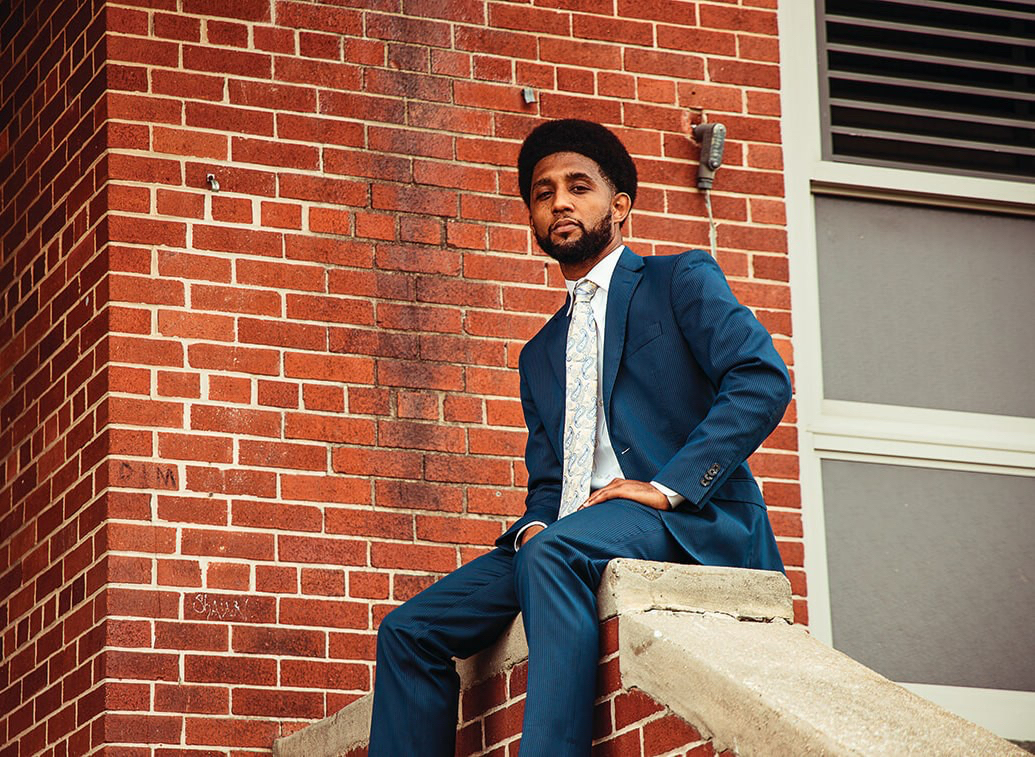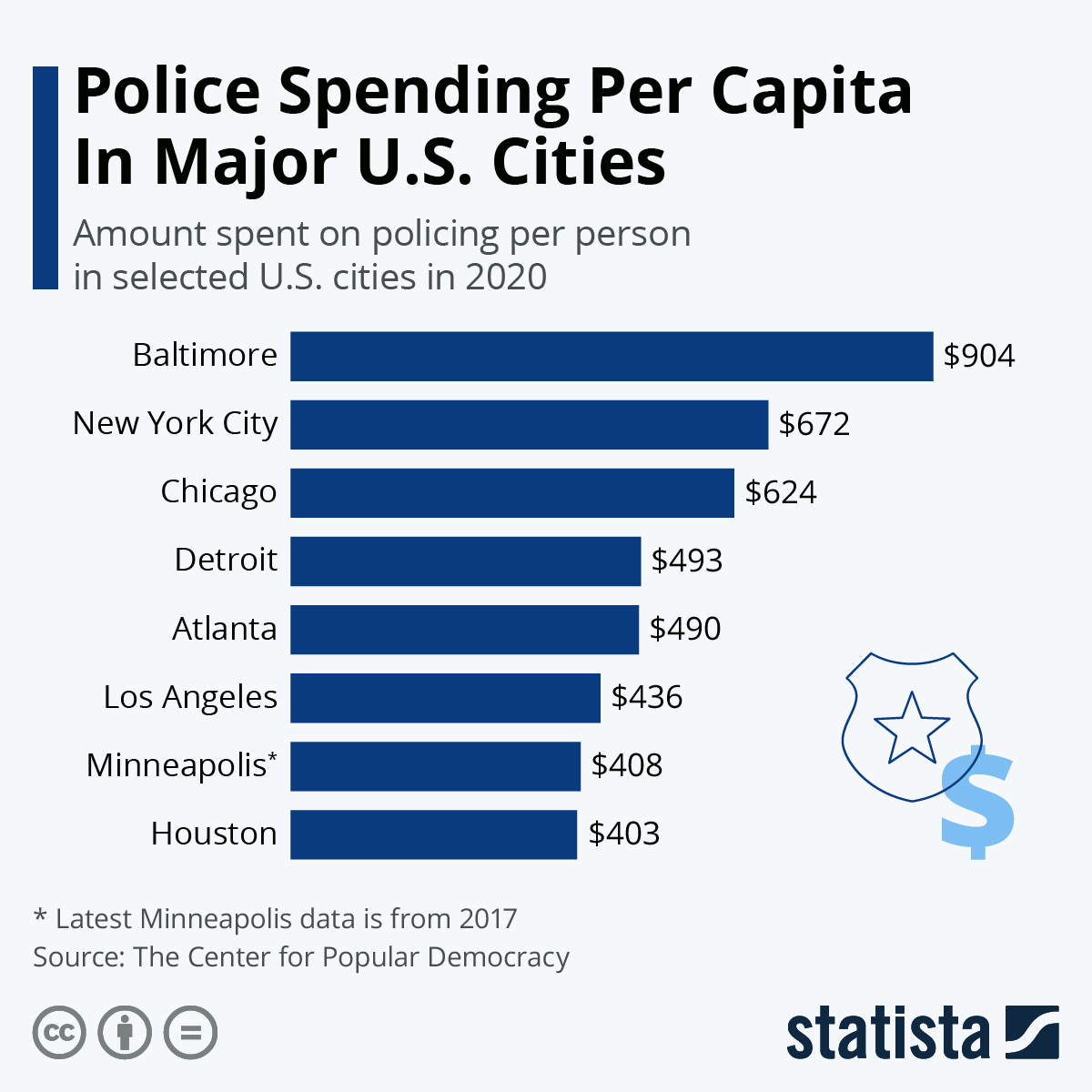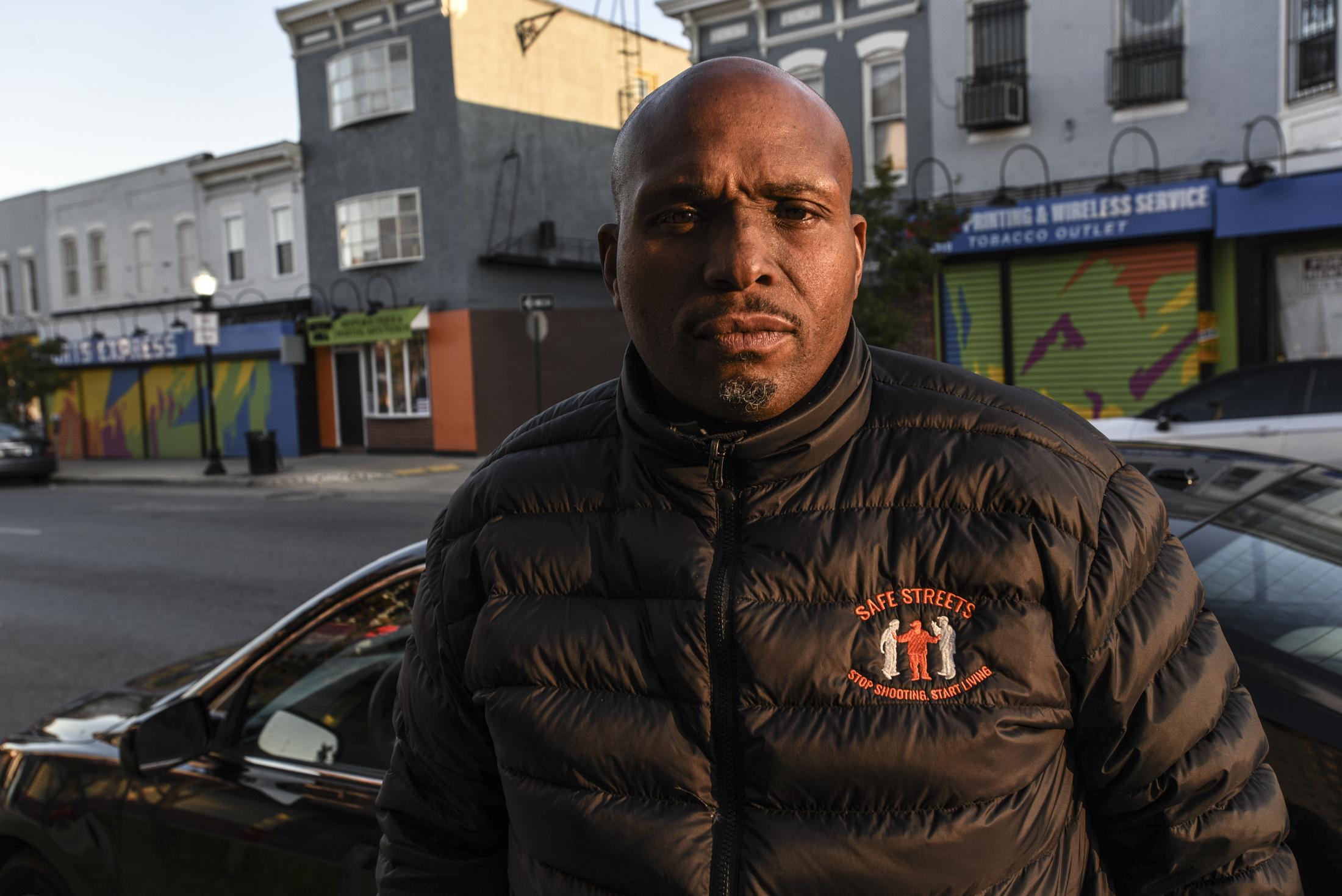
This story was published in partnership with The Trace, a nonprofit newsroom covering gun violence in America. Sign up for The Trace’s newsletters, here.
Baltimore’s 190th homicide victim this year was a 64-year-old man named Vaseles Nettles. He was shot on July 19 in Forest Park, a Northwest neighborhood lined with single-family homes, blocks away from where many wealthier Black professionals call home. Like so many killings in a city where violence spiked in 2015 following the death of Freddie Gray and has remained high, Nettles’ death attracted brief media attention before quickly fading from the news.
Just as police found the man’s body in Northwest Baltimore, the City Council considered its latest strategy in beating back the steady pace of killings and shootings: cash rewards for any information that could lead to an arrest, through a bill introduced by Councilperson Isaac “Yitzy” Schleifer. “Right now the clearance rate is under 50 percent,” Schleifer said, “so you have over a 50 percent chance in Baltimore of getting away with murder.”
That Schleifer would propose cash rewards, a strategy that has limited evidence of success behind it, speaks to Baltimore’s state of desperation to tamp down violence: People are willing to try something, anything, to stop the city’s record-setting pace of homicides—194, as of July 26.
Caught in the middle of the fight is 37-year-old Brandon Scott, a former councilperson and longtime supporter of violence interruption programs who successfully campaigned to become mayor on a platform that emphasized “reimagining” public safety to rely less on police.
On the right are old, entrenched rivals like Maryland Governor Larry Hogan, who recently told a local Fox television station reporter that the only way for the state to help “would be to declare martial law.” Former prosecutor Thiru Vignarajah, who ran against Scott for mayor in 2020, took to Twitter to launch a salvo at Scott for what he called the failed public safety plan. There is also pressure coming from small-business owners.
But the pressure coming from the mayor’s left flank, his own base, may be the greatest threat to the early days of his leadership. In Baltimore, political lines are drawn in shades of blue, separating moderate Democrats, progressives, and those farther left. Scott rose to power by tying these factions together with a central promise: To reform the Baltimore Police Department, an agency under federal consent decree, while shifting police resources to other agencies to combat the drivers of violence. Baltimore spends more per capita on policing than any major city in the country, far out-pacing New York, Chicago, and Los Angeles, and Scott’s pledge to change that won over far-left voters.
His base actively pushed the mayor to continue making cuts to the police budget, reductions he successfully lobbied for as City Council president last year. But when budget deliberations came in 2021, and Scott proposed increasing the police budget by $28 million, those same supporters became outspoken critics of the mayor. “The mayor is no longer an ally,” Rob Ferrell, senior organizer with Organizing Black, a part of the Campaign for Justice, Safety and Jobs, said bluntly. “He is the target.”
Scott has been in office only since December. Much of his strategy to make Baltimore a safer city— growing local community-based violence interruption groups; training the entire city staff in trauma-informed care; making every agency responsible for creating a plan to address public health and violence—is in its infancy. As the homicide tally rises, and the political attacks ramp up, criticism of the mayor has the potential to make it harder for him to get the support and resources he needs to fulfill his long-term promises in the next budget cycle.
HOW ALLIES BECAME CRITICS
Each spring, Baltimore residents engage in a populist tradition through which they can sound off on the city budget. It’s called Taxpayers’ Night. Even as COVID-19 vaccines were rolling out, this year’s Taxpayers’ Night was virtual. And without the crowds, the chanting, the finger-pointing, the messy parts of democracy making can sometimes lack its dramatic flair.
Still, even without the usual booming voices bouncing off the marble at the city’s traditional War Memorial building setting, the rage over this year’s police budget increase spilled from more than 80 computer screens. “It should not be possible for a moral mayor to claim he embraces the best highest possible use of precious and scarce revenue…while increasing the budget,” said Melissa Schober, a Baltimore resident, parent, and activist. She ended her spoken remarks, saying, “I regret my vote for you, Mr. Mayor.”
The mayor’s proposal to add $28 million to the police budget made supporters wonder whether they had been played. “The question for the mayor is did you really want to [defund]?” said Ralikh Hayes, deputy director of Organizing Black, a group tied to the Movement for Black Lives. “Or was this a talking point to get votes?”
Candidate Scott’s push to defund came in a watershed year for policing and public safety, after the national uprising that followed the police killing of George Floyd. Now that Mayor Scott has to govern, he’s left to make the case that his views and plans haven’t changed. He just needs time, he says. He says he still wants to change Baltimore from a city that relies on law enforcement into one that offers sufficient public services to address poverty, structural racism, insufficient housing, addiction, and joblessness. That degree of change can’t happen in a single budget, he says, but over the course of several years. “I have been consistent that reimagining public safety and the budget would not be overnight work,” Scott told The Trace.

Scott’s allies in City Hall, even those who support the idea of defunding the police, took their cues from the mayor that this was not going to be a year when the Baltimore Police Department budget would be pared back. “I have a relationship with a mayor [Scott] who’s in a hard position,” said Baltimore City Councilperson Ryan Dorsey, a consistent Baltimore Police Department critic and generally considered the 15-member council’s most progressive member.
PROMISES, PROMISES
Baltimore’s 2021-22 budget cut overall spending for services, including city public schools while increasing police spending—and, activists note, not investing enough in sectors that could address the root causes of violence. The section of City Hall responsible for growing the violence interruption programs central to Scott’s own vision for reducing crime received a $6 million bump, but the money came mostly from state and federal grants.
In justifying the proposed increases to the police budget, Scott said they were necessary to cover the city’s pension obligations and increased healthcare costs for the 2021-22 fiscal year.
Of course, Scott has another authority to answer to, beyond the electorate. Looming over any proposed cut to police spending is the 2017 federal consent decree enacted after the death of Freddie Gray prompted by a federal investigation into the department. It found that police officers were sweeping corners and engaging in racial targeting, excessive force, stop-and-frisk arrests that violated some residents’ constitutional rights. The court order requires the city to retrain its officers, upgrade its computer systems, and maintain a certain level of police presence on the streets. The oversight from the consent decree monitoring team alone costs $1.5 million each year. The Police Department’s compliance bureau costs another $38 million annually.
Critics of City Hall argue that the consent decree, and the politics around wrangling enough votes to reduce police spending are just cover for an administration that isn’t truly committed to overhauling public safety. “You would have to be a radical and bold dude to say [expletive] the consent decree,” Ferrell said. “We now know who [Brandon Scott] is. And going against the consent decree, that’s not who he is.”
But consent decree monitor Judge James K. Bredar has warned against making drastic changes to the Police Department while it’s under the federal court order. Too severe a cut to the department could trigger legal action by the judge. “The court can levy fines against your city and you’re forced to pay,” Baltimore City Councilmember Zeke Cohen said.
Scott has consistently supported the reforms the consent decree calls for. He recently met with President Joe Biden, who also supports federal interventions in local policing. “We are fully committed to the consent decree,” Scott said, “and that comes with responsibilities that we have to fund.”
Former Mayor Sheila Dixon, who was forced to resign from the office in 2010 and then also ran against Scott in 2020, knows firsthand how hard it is to balance the impulse to use police to reduce violence, and the understanding that the long-term fight against crime is about addressing social problems. Scott’s problem is not execution, she said, but communication. While Scott says he’s been clear and realistic, Dixon says he has failed to convey the limits he would face. “I don’t make a promise I don’t keep,” she said, referring to Scott’s close work with the defund movement. “I am not going to bullshit people. Brandon knew the budget.”
‘WHERE IS THE MAYOR?’
As spring gave way to summer, violence in Baltimore ratcheted up even more. Nine homicides occurred during Memorial Day weekend. By the following weekend, the popular Fells Point neighborhood, the waterfront district lined with restaurants and bars, saw two separate shootings that left three men injured. The incident sparked calls from the vocal business class to demand the mayor, top city prosecutor Marilyn Mosby, and the Police Department crack down on violence and petty crimes.
Since COVID-19 restrictions were relaxed, there have been large informal gatherings in the neighborhood. Business owners have reported open-air drug sales, and in a letter signed by 37 Fells Point business owners, they claimed a “culture of lawlessness” has contributed to violence. The business owners threatened to place their taxes in escrow to punish the city if it didn’t act quickly.
The city responded by hosting a virtual meeting days after the Fells Point shooting, for which 700 people logged on to hear how the Scott administration would address the recent shootings and nuisance violations. Suggestions filled the comment section of the online gathering. Could the city “constitutionally” use stop-and-frisk? Could it set up mobile metal detectors? Some blamed the consent decree for not allowing the police to be as tough on crime as they believed was necessary. When the comments got hot, the city disabled the chat function. But that didn’t cool the conversation. People went analog, holding up pieces of paper in front of their webcams. They asked, “Where is the mayor?”
Scott’s absence (he had another engagement) enraged many on the call. His supporters weren’t upset that he had missed the meeting, but that the city had agreed to host it.
The city’s response to the Fells Point violence ultimately involved more policing. Starting June 12, Baltimore Police Commissioner Michael Harrison delivered an expansion of patrols across the city. In Fells Point, the surge came with more cops on foot and in cars and helicopters. State Police and the Baltimore Sheriff’s Department also helped. In other hotspots, like Pennsylvania Avenue, in the heart of the Black community of West Baltimore, cops camped out by intersections.
But even with more police, shots were fired in Fells Point in the early morning hours of June 13. Just hours earlier, Tavon Jenkins was shot and killed blocks away from where cops had set up additional posts in West Baltimore. The incidents only intensified calls from Scott’s base that relying on police wasn’t working. “Cops don’t stop crime,” Ferrell said. “They respond to crime.”
On July 1, Safe Streets violence interrupter Kenyell Wilson was gunned down near the Cherry Hill neighborhood where he worked. Safe Streets had just celebrated a year without a single homicide at its site in the Cherry Hill neighborhood of Baltimore. Wilson’s death marked the second killing of a Safe Streets violence interrupter this year. Dante Barksdale, a close ally of the mayor, was killed in Baltimore in January.
Scott reasserted his support for groups like Safe Streets in slowing violence in the city, but also vowed to use every resource available through the Police Department to solve Wilson’s killing.

After weeks of heated debate about the future of public safety in Baltimore, on July 23, Scott rolled out what he called a “comprehensive violence prevention plan” that would fulfill his “commitment to deliver a holistic, comprehensive approach to combat gun violence.” Scott said that community members got to shape the 32-page plan by participating in 36 listening sessions.
Highlights include the increased funding for Safe Streets. There’s also “expanded investment” in the nonprofit Roca, which focuses on interventions with at-risk youth and young adults; the city’s seven hospital-based violence intervention partnerships; and several other organizations. The plan will use American Rescue Plan Act money. Still, the city has not made a fiscal commitment to the plan beyond the federal dollars being spent this year.
The plan also calls for holding gun traffickers and straw purchases accountable. Scott had previously traveled to the White House to discuss that and other crime prevention strategies amid rising homicide rates in many cities. It also calls for expanded services to gunshot survivors, victims of domestic abuse, and people reentering society after incarceration.
“For the first time, Baltimore residents were asked what they wanted to see in a public safety strategy, and they spoke up,” said Scott in releasing the plan last week.
Overall, the plan appeared, temporarily, to quell some fears among Baltimore’s activists. They said—at least on social media—that Scott had not abandoned his pledge. Whether he’s ultimately successful in transforming a city known for its past mass incarceration policies and corrupt police force into a model of policing reform remains to be seen. It likely hinges on whether he reaches his stated goal of reducing shootings by 15 percent over the next five years.
This story was updated to reflect the city’s goal of reducing shootings by 15% per year.
